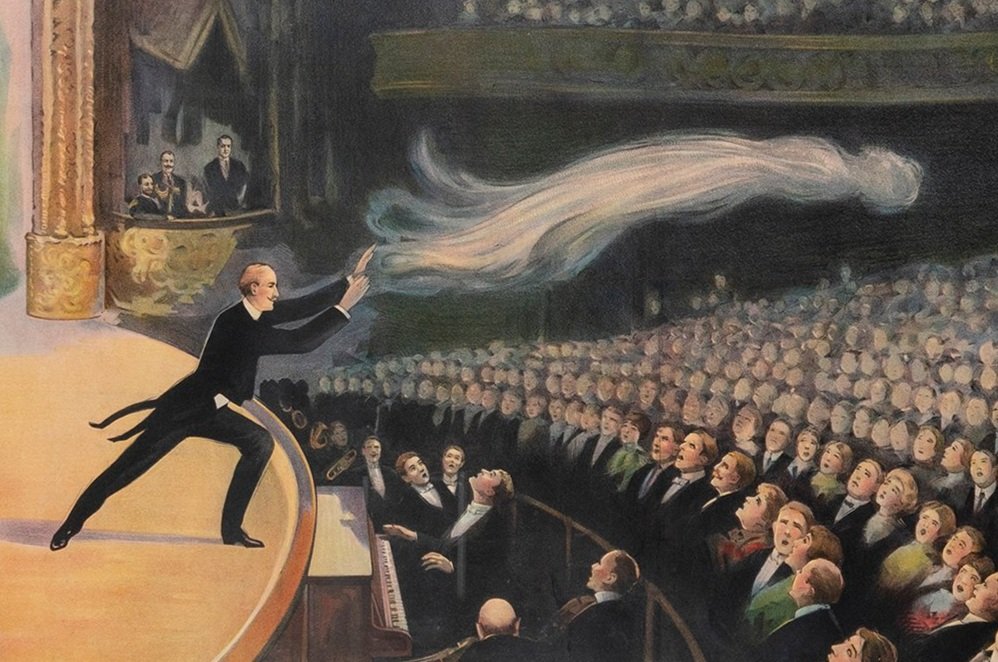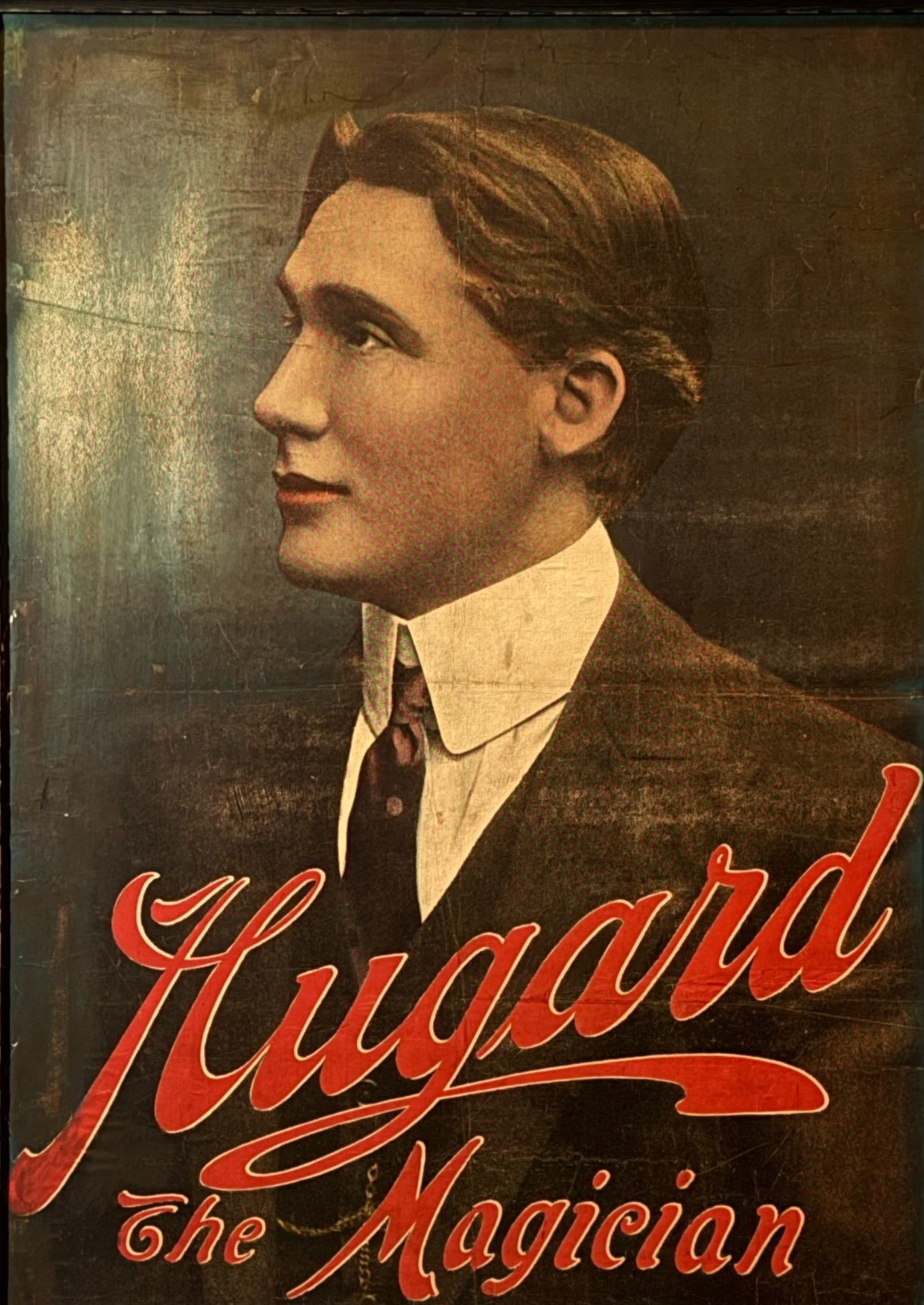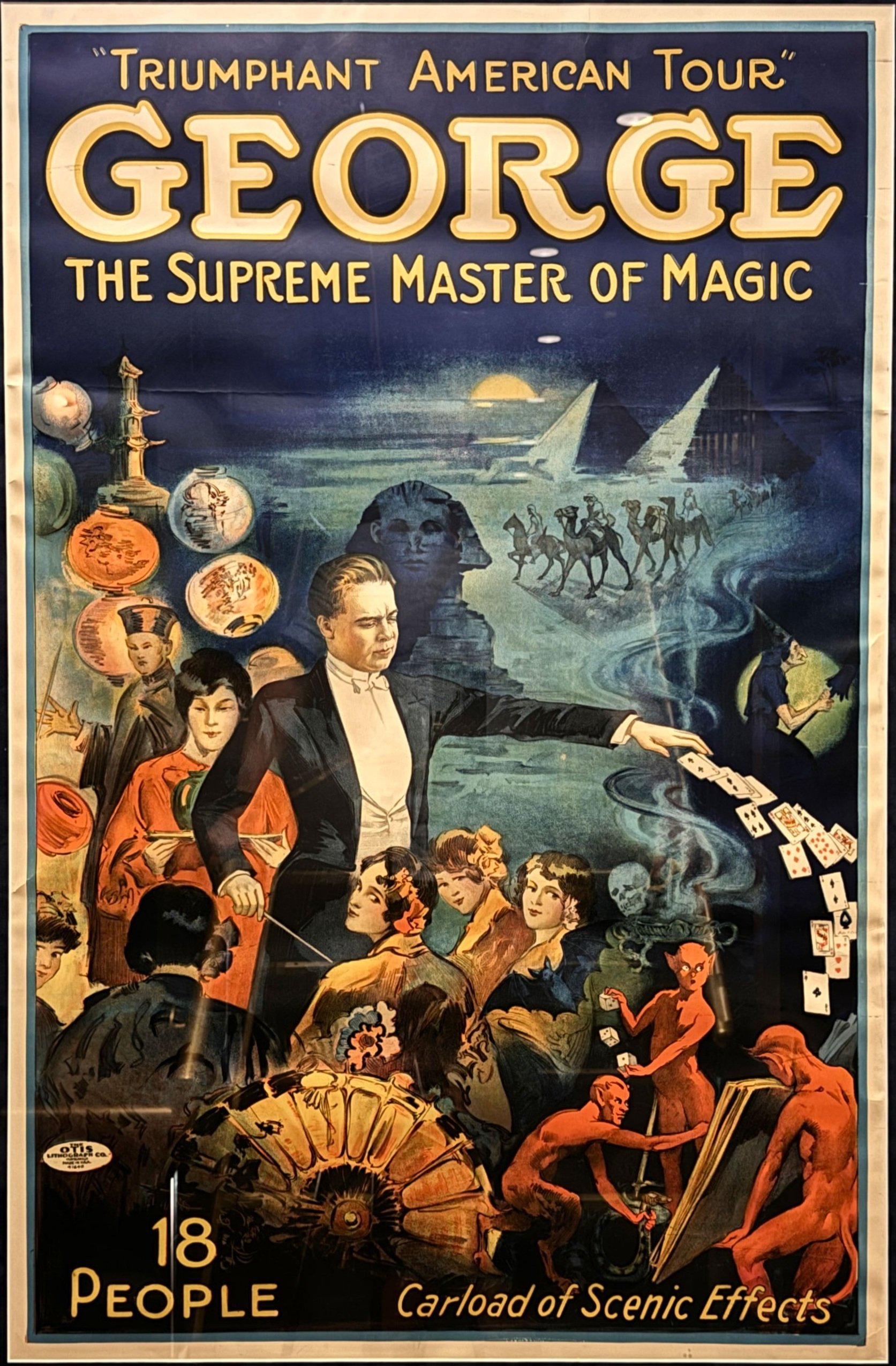
The Monarch of Mystery
By William Pack | Magician, Historian, and Educator, https://libraryprogramming.com/
By Denmark Works.; Weller, Edward. - Library of CongressCatalog: http://lccn.loc.gov/2014635611Image download: http://cdn.loc.gov/master/pnp/cph/3g00000/3g05000/3g05900/3g05922u.tifOriginal url: https://www.loc.gov/pictures/item/2014635611/, Public Domain, https://commons.wikimedia.org/w/index.php?curid=99306036Jean Henri Servais Le Roy
B. May 1865 – D. June 2, 1953
Practically unknown today, the inventive Servais Le Roy was one of the finest magicians and magic creators of the era. Many of his illusions are still being used today. During the late 1800s and early 1900s, his show was the talk of Europe and America.
Born in Belgium on either May 2 or May 4, 1865, he ran away from home. First to London, then France, and back to England. A family “adopted” him. In England, he worked on their farm, where he gained a reputation as a horse doctor–a sort of self-taught veterinarian.
His interest in magic began after he saw his adopted uncle perform the cups and balls trick. He saw the trick from behind, which exposed the secret. Le Roy practiced the moves until he could fool that uncle, even though he knew the secret.
In England, at that time, was the mecca of magic, Maskelyne and Cooke’s Egyptian Hall. Maskelyne was renowned for being a creator of the finest magic tricks. All the greats of magic visited the theater to see and, perhaps, buy or steal his newest creations. Many of those same greats performed in that theater, and Le Roy studied them all.
Le Roy started out performing small shows. By 1886, he had put together a full evening show. He was booked for one week at England’s Royal Aquarium and Winter Garden, a variety theater. The engagement was extended to six months.
Around 1888, he met an 18-year-old, Mary Ann Ford, who would join the act. He gave her a more exotic name, Mercedes Talma, and taught her sleight of hand magic. They married in 1890 and stayed together for 54 years.
In 1898, a manager convinced Le Roy, magician Fredrick Eugene Powell, and comic acrobat Imro Fox to team up as “The Triple Alliance.” Le Roy would provide the large-scale illusions, Powell would perform classic magic, and Fox added the comedy. On August 28, 1898, the act debuted in Milwaukee. The tour would be short-lived. The performers’ egos made working together difficult. Plus, after paying all expenses, the financial pie had to be divided three ways, leaving the performers with only crumbs.
However, the idea of a three-person act would stick with Le Roy. He developed his act with his wife, Talma, and Leon Bosco. Working as "Le Roy - Talma - Bosco," they were sometimes also billed as The Comedians de Mephisto Co. Le Roy again performed his magic and illusions. Talma specialized in sleight of hand and was a brilliant manipulator of coins. Leon Bosco, who was a rotund man, played a buffoon character performing burlesques of magic. Through the years, no less than nine men would be playing the Bosco character, with Leon acknowledged as the best.
They toured the British Isles, Europe, South Africa, Australia, New Zealand, North America, and South America. The act was sensational, a riot of laughter.
The show began with Le Roy, Talma, and Bosco, each producing rabbits–six of them–from a top hat. Talma performed her celebrated coin act and filled glasses of beer that flowed from an empty, paper-capped barrel.
With these and his other inventions,
he was the most copied
magician of the time.
One of the standout pieces was Le Roy’s Vanishing Bird Cage, later and perhaps more famously performed by Harry Blackstone Sr. He held a small cage with a live canary between his hands. In a flash, it was gone. In another part of the show, Le Roy, Talma, and Bosco produced 80 ducks. Bosco seemingly beheaded a duck and a rooster, restored them with their heads transposed, then chased them off into the wings with an axe. Fellow magicians and stagehands hated going backstage because of the foul stench from the aggregation of animals.
In 1914, he created his most famous illusion. In this trick, Talma lies on a couch, and Servais covers her with a sheet. He then makes her rise into the air and passes a large hoop over her floating body. Finally, he pulls away the floating sheet to reveal that she has vanished in midair. It took him seven years to refine this miracle before he performed it in front of an audience.
With these and his other inventions, he was the most copied magician of the time.
In 1921, Le Roy later put his own show into storage and accepted a contract from Horace Goldin to front one of several companies that were touring with Goldin's show, featuring the sensational “Sawing a Woman in Half” illusion.
LeRoy and Talma made their home in New Jersey. On Oct 19, 1930, Servais Le Roy was crossing the street when he was hit by a car. He suffered a broken ankle, nine cracked ribs, and a fractured skull. He spent 9 days in the hospital and 9 weeks recovering at home. In fact, he spent most of 1931 trying to regain his health. He was never the same after that accident. All future performances would be close to home, and there were only a few.
He never stopped working on the show. His passion was magic. He continued to devise new illusions and improve his old ones. In 1940, he tried to perform a full evening show. It was a disaster. He no longer had the stamina for such a show, and he was clearly showing signs of memory loss. Under-rehearsed assistants and an under-rehearsed magician were largely to blame. Time had passed him by, and the act was woefully out of date. It was a sad end for a great magician.
A short time later, Le Roy disappeared into his storage garage with an axe. He reduced his once prized props to splinters.
He never stopped working on the show.
His passion was magic.
On July 13, 1944, his beloved Talma died.
Jean Henri Servais Le Roy died on June 2, 1953. He was 88 years old. He joined that long line of magicians who reached the highest fame but ended their lives at or near poverty.


